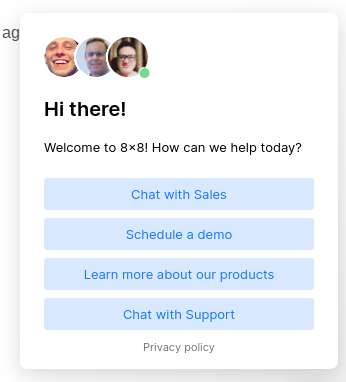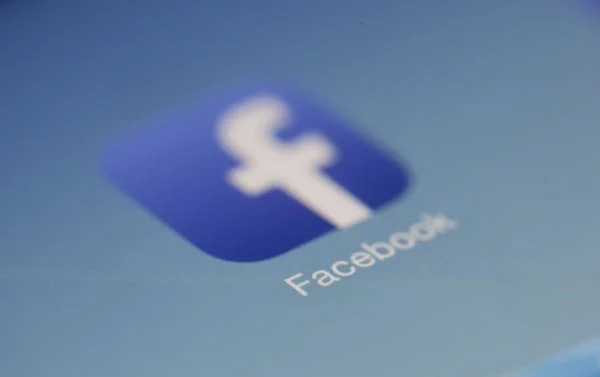When you think of the word ‘iconic’, what’s the first thing that comes to mind?
For many people, it’s famous logos they see every day. From the golden arches of McDonald’s to the purple camera of Instagram, these logos are well-known all over the world and can be recognized at a glance by anyone who’s used the company’s products before.
These kinds of highly iconic logos are the perfect demonstration of what makes branding so powerful.
We’ll be exploring the topic of branding at length below, going into deep detail on what it is and why it matters to your business. After that, we’ll share some best practices for your branding, so you’re a true expert by the time you finish reading this article.
What is branding in business?
First, of course, we’ve got to establish a definition of the topic. Branding itself is the act of creating a strong identity for your company (more on this shortly).
Good branding should cover every possible area of your company. For example, if you’re branding yourself as an eco-friendly cleaning company, all your social media accounts need to make this clear. Your website should detail how you secure eco-friendliness. Your logo should instantly make people think of both cleaning and eco-friendliness.
In short, it’s about putting together a holistic image for your brand that’s more than just a facade. The best examples of branding all involve reflecting brand values, not just aesthetics, in all aspects of the brand itself.
What’s a brand identity?
A brand identity is a summary of who you are as a company. Maybe you’re friendly and approachable; maybe you’re witty and full of dry humor; maybe you’re serious and knowledgeable.
Brand identities are essential to successful branding. You can’t create or push an image for your brand if there’s no substance to that image, or if it’s very two-dimensional.
Let’s contextualize that with a good example of using your brand identity for branding purposes.
A quick glance at the RealVNC homepage reveals that it’s a piece of remote access software (RAS) that places a heavy emphasis on safety. This is a direct statement of the brand’s identity; it’s the first thing you see when you look them up.
That focus on safety carries on throughout the rest of the page. Directly below the banner stating that they’re the safest RAS is the following image:

The familiar security shield icon beside the words ‘certifiably secure’ brings the idea of safety back up, both through words and visuals. The same effect is achieved again directly below, with the following visuals:

Consider the words that jump out right away: ‘secure’, ‘encryption’, ‘verification’, ‘safe’. These are all associated with increased digital protection, which helps highlight and shape the brand identity RealVNC communicates as one that centers on security.
What are some real-world examples of branding?
Following on from our RealVNC example, we’ll do a quick breakdown of a few other companies that really get their branding right.
8×8
Virtual communications solution 8×8 highlights their major focus on customer satisfaction right from the get-go when you click on their website. They show this in a few ways, most notably in how they treat you, the prospective customer viewing their content.

The language and iconography in the above screenshot both communicate their customer-centric brand identity. Rather than a bot or brand logo, the images associated with their chat feature are real humans (who look happy to be talking with you), paired with the green dot that indicates being available online.
This immediately creates an air of approachability.
The phrase ‘how can we help’ also puts customers’ needs first. Their priority is to offer help to you, not to get anything from you. Then there’s the fact that they use the word ‘chat’ twice, suggesting casual and friendly conversations between customers and the brand.
Even when it’s blurry and at an angle, the icon that represents Meta’s flagship product is instantly recognizable.
Whether it’s conscious or not, you’ll likely have recognized the specific shade of blue used by the brand, as well as the font of the letter ‘f’. Plenty of people will also have specific feelings tied to that icon, whether those are more along the lines of ‘I chat to my friends there’ or ‘that’s where I go to talk about my hobbies’.
From just the combination of that icon and the name, you’ve also got a good idea of how Meta wants you to use their product. Facebook is for connecting with people, and it involves sharing, well, your real face (hence the name).
Dr. Martens
The work boot shape. The iconic yellow stitching. The thick rubber soles. The leather. These are the things that help make any pair of Dr Martens instantly recognizable, even in the absence of a visible logo.
Docs are a great example of visual branding, in no small part because they’re still identifiable regardless of how many different models and colors they come in. Their identity as a pair of shoes made by an iconic English retailer is always indisputable.
Nike
The Nike ‘tick’ logo has become an enduring symbol among major sports brands globally. Similarly, the ‘Just do it’ slogan is widely recognized as one of the most iconic slogans you’ll ever come across. Providing an inspirational message based around achieving your goals has helped Nike connect with leading athletes and contributed to their own goals of becoming one of the largest sports brands in the world.
Apple
The famous ‘apple with a bite taken out’ logo has become synonymous with cutting-edge technology married with sleek designs. At the heart of Apple’s branding is it’s simplicity and user-friendly products. They make you feel like you’re part of an exclusive club with every new product launch, and that’s what sets them apart in the tech world.
Envato
In 2006, three entrepreneurs set out to transform the creative industry from a small garage in Sydney. By 2024, Envato has become a vital platform for millions of creatives worldwide. Envato refreshed its brand with a bold new logo, vibrant color palette, and modern visual identity to reflect the ever-changing creative landscape.
The rebrand inspires those striving for better—better assets, workflows, and ideas brought to life. Alongside the redesign, Envato revamped its website for improved functionality, relaunched its 3D category, and enhanced its royalty-free music library with new features to empower its creative community further.
Top reasons why branding matters
Now that we’ve seen how branding looks in practice, it’s time to consider the reasons why you’d want to implement it in your own company. These are listed below in no particular order.
Establishing who you are as a brand
First and foremost is the fact that branding lets you essentially hold up a banner that says ‘here’s who we are, and what we stand for’. And the best part? You get to customize every part of that banner.
Doing this right lets you send out constant signals to anyone who sees your content, increasing your brand awareness. These inform viewers of your brand identity, letting them be drawn in without any direct interaction between yourself and the prospective customer.
Connecting with the right customers
When asking questions like ‘what is vendor risk management’, it’s always important to also ask how you can mitigate risks. One great way to do this is to make sure you’re appealing directly to the kinds of people you’re deliberately trying to target.
Broadcasting your brand identity is a fantastic plan to achieve this.
Showing the world who you are lets the right people flock to you. That’s true for both humans and brands, and is another solid argument in favor of using branding.
Standing out
In a world in which everyone can make their website and social media profiles look nice, it’s important to be more than just nice. You’ve got to be unique as a brand if you want to stand out, and that’s where branding is so great.
Consider the branding in the following HelloFresh image:

From the cheese to the chicken to all the vegetables, the lack of plastic packaging makes the whole box look more ‘fresh’, as the brand name suggests. Competitors looking at this image will know that the ‘fresh’ aspect of ready-to-cook meal boxes is fully associated with HelloFresh, just as customers will.
Retaining customers
A company with a strong brand identity is likely to deliver the same standard of excellence in its CX (customer experience) over time. This means that customers who are happy with your services once will be likely to return.
There’s also the fact that the kinds of customers who seek you out for your specific brand identity are likely to be interested in precisely that. This means they’ll stick with you after a successful purchase because they like your brand more than a one-off product.
Driving sales
Well-designed branding is a sales tool in its own right. That’s because it’s going to help you attract and retain customers who care about your message and identity, as laid out above.
And of course, with loyal customers come more sales.
As a bonus, your customers will know to come to you for any products that fit your messaging. If you usually sell comfortable and supportive boots, for example, customers will be more likely to think of you when they’re after equally excellent fancy dress shoes.
What is a branding strategy?
Next, we’re going to talk about ways to take the theoretics of branding and apply them in practice by means of a branding strategy.
Essentially, your branding strategy is your plan for turning your branding ideals into an observable reality. It should address how you’re planning to roll your branding out, what that branding looks like, and who’s involved with which aspect of the overall strategy.
For example, let’s say you’re looking to brand your contact center as a service (CCaaS) solution. Your branding strategy would outline which colors and designs your official media will use, as well as how you’re going to make sure you stand out as the best CCaaS provider on the market through those design choices.
Branding best practices
Lastly, we’ll go through some of the most important best practices associated with branding. By following these, you can ensure you’ll get your branding right every time.
Be consistent
Above all else, consistency is key when it comes to branding. This is because branding is all about creating an identity, and that identity needs to be recognizable if it’s going to have any impact on customers.
And recognition comes from repetition.
Or, well, not exactly repetition. You don’t want to just say the same thing over and over. What you do want is to make sure that every branded message is internally consistent, so your brand values and aesthetics stay the same.
Keep it simple
Consider the following image:
You’ll likely know the company behind the product within a second of glancing at the iconic Apple logo. That quick recognition comes, in part, from the fact that Apple’s famous logo is equal parts simple and effective. They use a basic apple outline instead of something photorealistic.
To put that into perspective, it’s always good to keep to a simple, strong concept. When things get complicated, you start to lose people–and, crucially, you miss out on that first-impression instant recognition that all branding should aim for.
Train employees
Even the strongest branding isn’t always fully intuitive. For example, is your brand ‘powerful’ or ‘strong’? What’s the exact color palette you use?
These are the kinds of questions every employee should be able to answer easily.
The best way to spread this knowledge is to take special care when you’re training newbies at your company. Make sure you give them extensive training on the topic of your branding, so any new employee can spot potential errors in branded content and come up with helpful branding suggestions.
Be accessible
While it’s good to have a clear idea of your target audience, you’ve got to make sure your branding is accessible to a broad variety of people. This helps you draw in more customers without alienating anyone.
For example, if you suspect that prospective customers might not all be familiar with the term VoIP, you’d be better off advertising your product as a voice-over IP phone system. Anyone who does regularly use the term VoIP will know what they’re dealing with, while people who don’t are still included.
Also, you may want to consider creating a product video that showcases your brand’s values and services. A well-produced product video can resonate with a wide audience, including those who prefer visual content over other formats.
Check on your progress
As we’ve established, branding doesn’t happen on its own, and it doesn’t always go quite the way you’re planning. Some things are bound to slip through the cracks, no matter how vigilant you are, but too many slips create a less unified brand identity.
Thankfully, there’s something you can do about it.
As long as you conduct an audit regularly enough, you’ll be able to catch any mistakes or incongruities before they become a problem. Make sure you’re always monitoring your progress with regard to branding, and you’ll be more likely to succeed in that department.
Final thoughts
Getting branding right takes time, as well as hard work.
You may have to go through a few different iterations of your company’s brand identity before you arrive at the best one. Just look at how many times the Google logo has been redesigned if you’re feeling unsure about reworking an existing image!
There’s also, of course, the matter of making sure that all your company content is branded uniformly. This is perhaps the most time-consuming part, simply because you’ll often have to filter through a lot of content, especially if your company has been around for a while.
However, branding is always worth it.
When you’re able to make that first impression on customers and leave a lasting mark in their minds, you’ll be able to rise above the competition. The companies that do branding well can carve out a name for themselves.





















